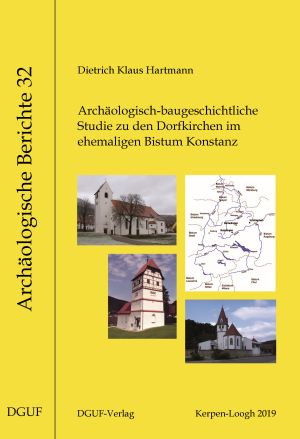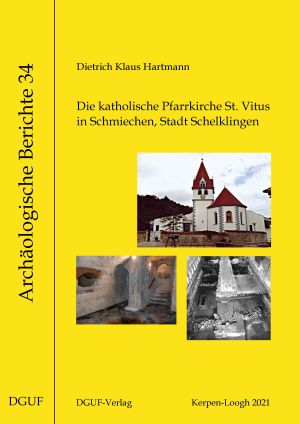Hartmann, Dietrich Klaus
Archäologisch-baugeschichtliche Studie zu den Dorfkirchen im ehemaligen Bistum Konstanz
The eastern part of the former diocese of Konstanz / Constance represents a mostly rural area, where a large number of historical churches still exists. As some of them originally date back to the early middle ages, many of them were the subject of archaeological excavations during the last decades. This book, using the database of the Landesdenkmalamt Baden-Württemberg, aims at giving a complete overview of this research, most of which remained unpublished till today.
The main focus of this book is an attempt to compare the different forces influencing the early appearance of these churches. Especially the local existence of early-medieval settlements and the possible role of monastic property will be shown. As a result, it is possible to gain a comprehensive overview of the evolution of church architecture within a historical region.
The churches of St. Georg at Burladingen, St. Vitus at Schmiechen and St. Peter and Paul at Nusplingen, which constitute the basis of this work, will be presented in following volumes of this series.
Additional infomations you find here:
https://doi.org/10.11588/data/ENNK5V
Die ehemalige katholische Pfarrkirche St. Georg in Burladingen
Even though the former parish church of St. Georg at Burladingen, Germany, nowadays appears as an example of late baroque architecture, archaeological excavations in 1982 showed a number of previous buildings, of which the oldest one dates back to the 8th century. For the first time, the important results of this excavation, showing the typical evolution of a rural parish church in south-western Germany, will be presented within this volume. The initial phase is characterised by a small early medieval church, erected on a preexisting churchyard. Several times rebuilt during the following centuries, the current building is the result of a major reconstruction in 1770. Unusual in the context of church excavations, a rather large number of finds – especially ceramics – was recorded. This major addition to the fairly small corpus of relics in the area is used to extend the knowledge of the material culture in the region. This publication is part of a multi-volume project by the author, of which the first section, an overview of rural churches in the south-eastern area of Baden-Württemberg, was published in 2019.
Die katholische Pfarrkirche St. Vitus in Schmiechen, Stadt Schelklingen
The Catholic parish church of St. Vitus in the Schmiechen district, town of Schelklingen (Alb-Donau district), in its current appearance is a mixture of different eras, from Gothic to modern. Archaeological investigations carried out in the course of a redesign and extension in 1990 and 1992 revealed a number of predecessor buildings, the earliest of which can be dated to the 9th century. The first church building, which in turn was erected on a pre-existing cemetery and on foundation remains of unknown date, was followed by several high and late medieval construction phases before the church was greatly expanded in the present by lateral additions. A special feature for a church in a rural area is the small barrel-vaulted crypt built in the 12th century as part of an extension. The finds recorded during the excavation inside the church, especially the pottery, are a valuable addition to the hitherto rather sparse material available for the region in question. Thus, the present investigation is an important building block for the research of the rural church landscape of southeastern Baden-Württemberg.









